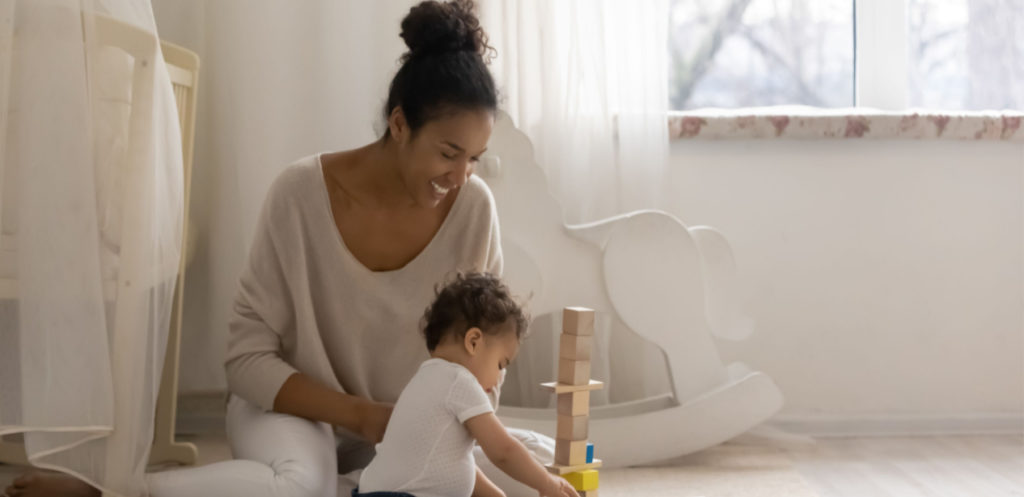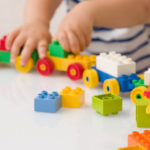Communication is the most valuable of all life skills. It allows us to share and develop our knowledge, express our ideas, needs and feelings, create bonds and help others. Communication is a door to the world and to great achievements.
It comes as no surprise that such a powerful skill is also a complex one to master. If we compare a baby’s communicative behaviors with an adult’s. We grasp the long path each of us has had to follow.
What is child development? And how does it work?
Child development is a process through which children’s skills emerge in several interrelated domains. Including sensorimotor, cognitive, socioemotional and, of course, communication. Development in each domain proceeds through a series of steps. And typically, involves mastering simple skills before more complex ones can be learned. Whereas children play an active role in the development of their own skills. The interactions within their environment can have a profound impact in their progression.
In this article, we will focus on one developmental domain: communication. We will center on early stages, which encompass children from 6 to 18 months of age. And explore how parents can foster children’s progress.
What is communication?
In a simple way, communication can be defined as an act through which a person conveys or receives information. Whether about needs, desires, perceptions, knowledge, and others. It can be intentional or unintentional, it can have linguistic or non-linguistic forms. However, communication can also be described as a magical ability, a power that can change the world.
How do children develop this (super) power?
When a child begins to produce words (which is variable, but it is expected to happen between 10 and 18 months). Communication is already becoming more dependent on two more specific domains of communication: language and speech. In addition, communication, language and speech are often seen as synonyms, but, in reality, although intertwined, they have different meanings. Communication goes beyond speaking. A child might still not be able to talk, but she can convey her messages and needs.
This means that, before the first words we care so much about, we must pay attention to a series of signs. That tells us if the child is correctly developing its communicative skills. After all, one does not start a house from the roof down, right?
How can I help my child build the foundations of a solid house?
Children are active learners who are interested in testing hypotheses about the world. Their knowledge increases when they interact with people and objects. The act of playing is therefore crucial for any child’s development and bond creation. Play is needed!
Below, we share some examples of toys that you can use to stimulate important skills while playing:
1| A (simple) ball or a car that can be used to support turn-taking abilities.
When children learn to take turns, they learn the basic rhythm of communication. It is a crucial skill in order to effectively participate in social communication. And we can develop it even when children do not use verbal forms of communication. (e.g.: you can narrate the game by saying “it’s my turn”, “now, it’s your turn” while throwing a ball/car).
2| Dolls (e.g.: Baby Beau Knitted Doll; Wayne & Julia Dress Up Doll).
This can be used to reinforce a child’s language comprehension skills. You can start by pointing to the different parts of the doll’s body and clothes while you name them. Repeat the process until the child can identify and name them too.
3| A fruit basket, a puzzle fruits mat or even a cooking set.
These are objects that you can use to give the child quality linguist inputs. At this stage we want the child to develop functional language skills. Let’s start with functional words like “give”, “want”, “need”, “mine”, “yours”. That will allow the child to ask, deny or share something. And with common vocabulary like “spoon”, “cup”, “apple”, “banana”. Also, with other words that the child will use in his/her daily routines. You can also use these toys to promote image/object associations and/or two images of the same fruit/object. (e.g.: associate the “apple” of the food set with its image on mat).
4| Animal blocks and/or Bath buddies (farm animals, vehicles).
With which you can create opportunities to encourage the child to imitate your sounds, syllables, interjections and onomatopoeias. (e.g.: the sound of the car; the sound of the dog; the sound of astonishment). You can also use musical instruments to motivate the child to imitate you, for instance producing syllables while performing with other actions. (e.g.: producing “la, la, la” while playing an instrument). Start by doing the same: imitate the child’s sounds and the faces she makes, laugh when she does. Be a model to the child when you want her to make something.
To conclude, we would like to ask you what is common to all these activities? Yes, the answer is: yourself! The key relies on you, in those with whom the child has an emotional bond and regular interactions.
These are the ones who will make the child feel safe and available to learn and develop. Take quality time to play with your child. Speak with your child, encourage eye contact, describe things that you are doing. Find the time to share and grow together. Finally, do not forget to value and positively reinforce every victory, even the smallest steps. And, if something worries you, seek help. You are never alone in this adventure of parenthood!
- Cátia Catita,
- Senior Speech and Language Therapist
- SpeechCare Innovation Center






